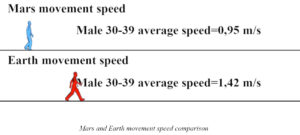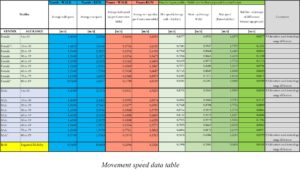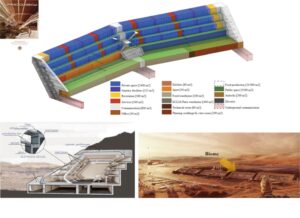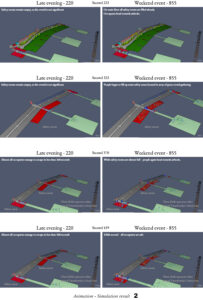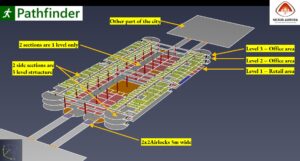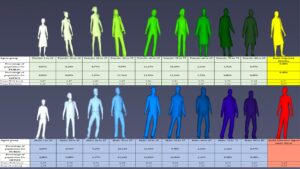METHODS FOR SIMULATING CROWD MOVEMENTS IN LOW GRAVITY ENVIRONMENTS FOR
SAFE EMERGENCY EGRESS DESIGN
With the advent of multiple colonization programs, located off earth and in low gravity environments, there is a need to focus on safety procedures and standards in the habitable spaces.
As living hubs and habitable spaces get larger the complexity of layout and necessary systems becomes greater. Contemporary knowledge shows the more people in an environment without fully prescribed behavior, the higher the required complexity of the habitat and the more redundant safety systems there must be. Emergency systems for egress of 10 people significantly differ from those for 50 people.
Safety of the people is a top technical priority in every enclosed habitat under any environmental conditions. It follows therefore, the design of a base, colony or even a city in orbit or on a planetary surface complies with this principle.
Each space related project of habitable volume must assume different scenarios for people’s behavior during emergency situations. The base must provide as much failsafe shelter as possible which can be used under panic or failure of training situations.
Functional, structural, engineering and construction method solutions as well as adequate procedures must provide efficient emergency egress sufficient for the number of people able to be in a space at any one time.
This evacuation process is one of the key elements in saving human lives in emergency situations within hostile environments.
The evacuation processes are based on the mechanics of locomotion of those involved. The reduced gravity inherent to these situations significantly influences single human movement as well as crowd formation and flow. Although the locomotion of individual humans is well studied in different gravitational conditions, the crowd formation and influence on safety design does not appear to have been focused on within that research.
Human movement mechanics in low gravity environments is different enough to state that crowd behavior will not follow predictions made in standard gravity conditions. This indicates that mistakes in planning may result in casualties and injuries.
This project focuses on high-level methods and major guidelines for preparing data for evacuation processes in low gravity environments.
The purpose is to formulate guidelines for evacuation strategy and reiterated design policies in low gravity environments.
The methods used to obtain the highest standards in safety design are multi-iterated software simulations of crowd movements with constant upgrade of assumed solutions. These methods can be used to help in the design and maintenance of construction methodology and quality.
The project is going to develop in two major directions:
Explore crowd formation and movement in terms of changeable locomotion conditions (and collision avoidance) in terms of reduced gravity
Explore different base sizes to seek for differences between safety guidelines and safety measures
Please join us on NexusAurora Discord.
Pedestrian velocity on Mars video
Twardowsky Base Late evening scenario for evacuation of 1 BIOMe video

We are gratefull Thunderhead Engineering for suporting our work!
Thunderhead Engineering provides simulation software:
Pathfinder -an Agent based simulation software
PyroSim – Fire Dynamics Simulatoer (FDS)
Those simulators are critical in RSET (Required Safe Egress Time) and ASET (Availabe Safe Egress Time) calculations.
With formulas you may find in the video above we may introduce Mars and Moon based walking speeds and simulate the emergency situation there.


 Drive
Drive

